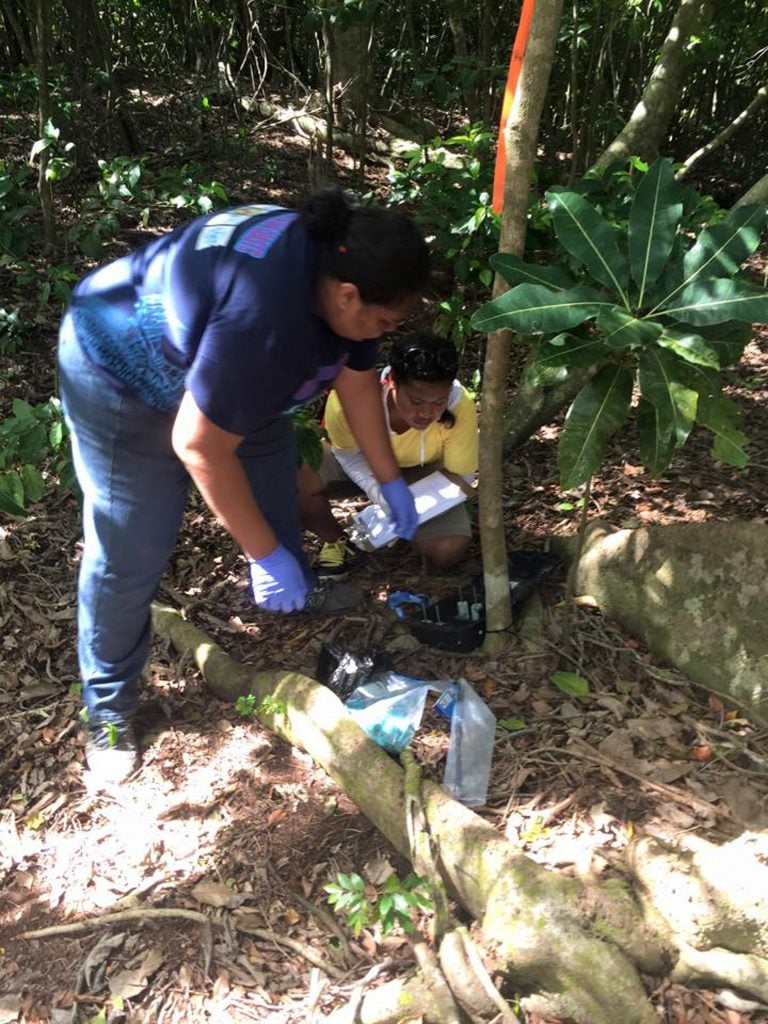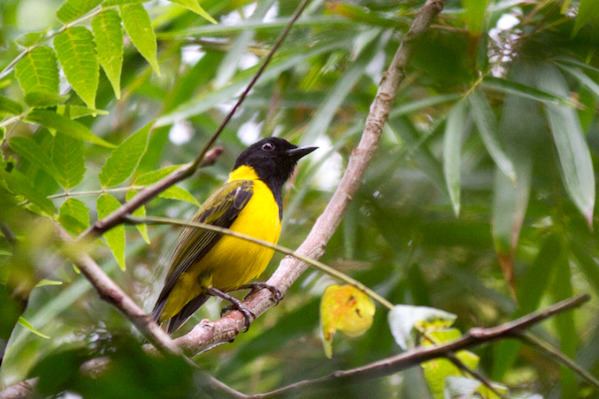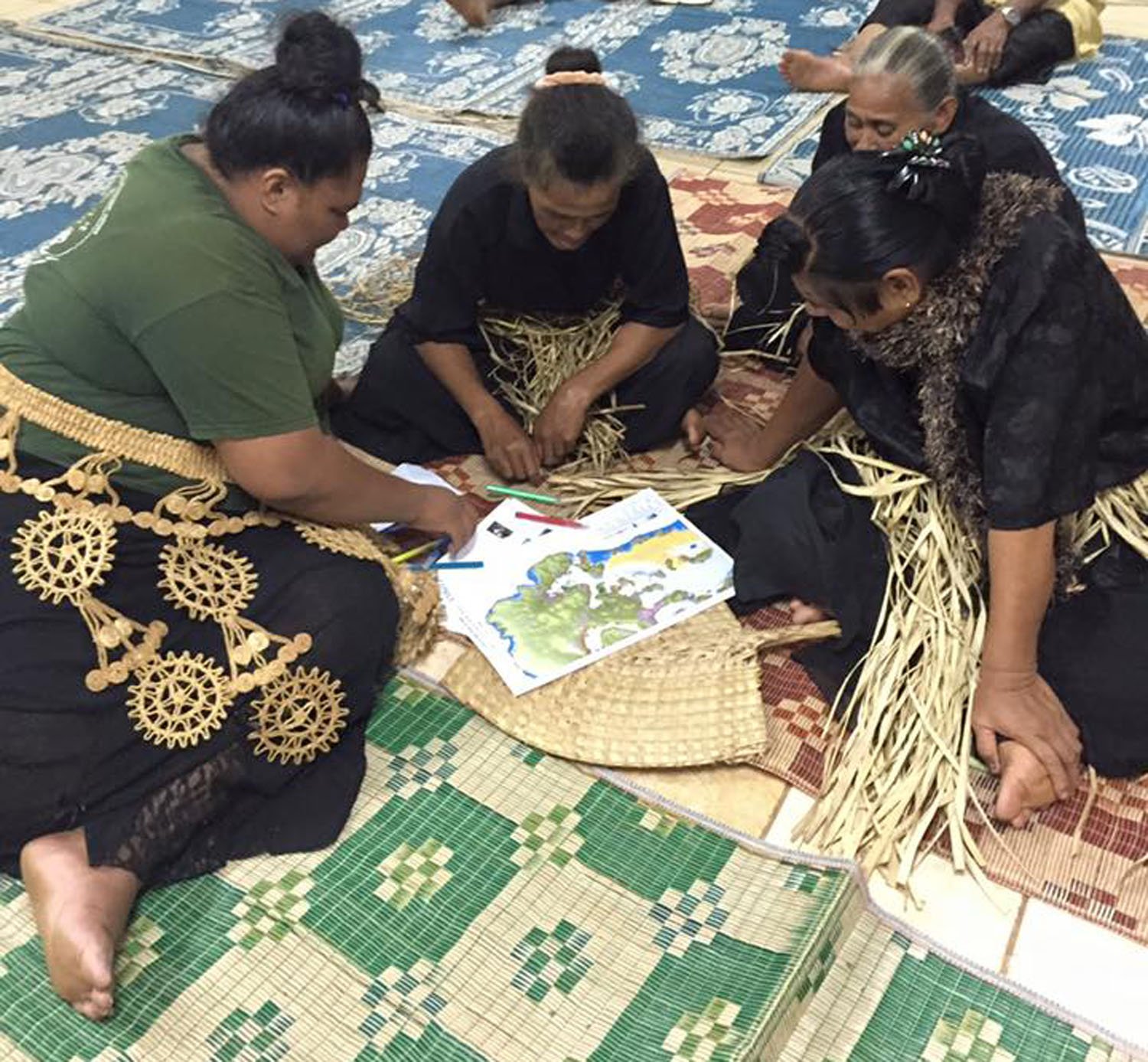Nuku’alofa, Tonga – Mount Talau on the island of Vava’u in Tonga, is a conservation area.
It is also a favourite sight-seeing place for many – locals and tourists alike.
Hovering over Neiafu town, the view from the top is majestic.
One gets to see the Bay of Refuge and surrounding islands from the mountain and many who had been up there and seen it all can testify to its beauty.
But, sadly over the years the eco-system on Mount Talau has been changing for the worst.
Rats by the thousands have somehow increased over the years.
They have taken to destroying young plants that grow in the rainforest.
More significantly they have also started destroying the Tongan Whistler.
The Tongan Whistler (Pachycephala jacquinoti) is a species of bird in the family Pachycephalidae. It is endemic to the islands of Vava’u and Late in Tonga.
It is mainly found in tropical primary forest, but can sometimes be seen in second growth or wooded plantations. It is similar to the Australian Golden Whistler in appearance, but the head and throat of the male is entirely black, and the underparts of the female are yellow.
The Tongan Whistler is threatened by habitat loss and the increasing rat population on Mount Talau.
The Tongan whistler was also described by the French zoologist Jacques Pucheran in the genus Eopsaltria and has been variably considered as a subspecies of the Golden Whistler.
The situation in Vava’u with the birds had gotten so worse that the people of Neiafu sought outside help to see what could be done to stop the rats and save the Tongan Whistlers.
Into the picture entered the Vava’u Environment Protection Agency (VEPA).
The initial help
After initial ground work and assessment that were carried out, VEPA managed to convince the Secretariat of the Pacific Regional Environment Programme (SPREP) to partner with them in the work of trying to save the Tongan Whistlers and the rainforest at Mount Talau.
VEPA’s Executive Director Karen Stone, who has made Vava’u home in the last three decades said SPREP helped initially with awareness funding.
“SPREP gave TOP$1,000 back in 2015 to start off the awareness and VEPA has managed the project in kind since then,” Stone said.

“That helped us run our awareness campaign with the people of Vava’u and we worked with the communities here to ensure that they understood the issues and what we were going to do to help eradicate it or lessen the impacts seen.”
VEPA put together a team which included youth volunteers who would take up the task of implementing the plan they had.
Fanua and her band of warriors
Leading the task team was Stone and her able assistant Lisa Fanua, who took over as the team leader after that.
Fanua has worked on the Invasive Species Project since its inception and has seen the improvements over the years.
“The plan was to try to minimise the amount of rats up in Mount Talau because they were killing off the population of Tongan Whistler birds, which are found here in Vava’u,” she said in an interview in Neiafu, the capital of Vava’u group.
“The rats eat the bird eggs.
“We started in 2015 and right now we believe the project is working. In the beginning we found two or three birds on Mount Talau but now we have birds all over Vava’u.”
Her team of five to seven volunteers have a monthly schedule that see them hiking up Mount Talau to change rat baits. There are 24 stations up on Talau and each station has four baits each in one site.
That is a total of 96 baits placed and changed every month within the rainforest up the mountain.
“When we go up to change baits we monitor changes and record everything we see and notice in each station,” she added.
“If there are old baits left over we bring it back and take them to the Waste Authority to ensure these left over baits are discharged off in the safe dumps.”
Added challenges
While carrying out their monitoring work up the mountain, the VEPA team have also recorded three other challenges.
Rats are also eating and killing young plants that are growing inside the rainforest.
At the same time there were wild crawlers that have grown within the forest and covering tree tops and stopping the sun rays from shining through the forest.
“We noticed that the rats are also killing off young plants in the mountain area, which is another big problem,” Fanua said.
“That is why it is now more important for us to eradicate the rats for good.
“The other challenge is the wild crawlers that have grown so fast within the rainforest and covering the trees, stopping the sun rays from filtering through the forest to the ground.
“So we are also working with young people in the area to try and control the crawlers by cutting them down from the stock.”
The third challenge they have noticed is the presence of stray pigs in the mountain area.
The pigs belong to villagers of Neiafu and the surrounding settlements.
Fanua said if the pigs are not controlled, they could pose a bigger threat than the rats.
“Stray pigs dig up the area and loosen the soil, which could result in soil washing out of the mountain area if there is heavy rain and prevalent rain for some days,” she revealed.
“They also dig up the young plants and kill them in the process.”
In 2014, a survey found 262 native vascular plants in the area.
Success so far
Both Stone and Fanua believe the work on eradicating the rats is working so far.
“The programme is very good,” Stone said.
“But it needs to be ongoing to ensure successes and that hopefully with future invasive species programmes other initiatives will be undertaken to protect and enhance Mount Talau, as well as other critical biodiversity sites.”
Fanua said she is hoping a bird survey could be done soon to record the change in Tongan Whistlers’ population on the mountain.
“That would be great if a bird survey is done to confirm the result of our work,” she said.
“Bird counting is tough because the Tongan Whistlers are small birds and it is hard to track them with the naked eye but we can hear them singing and whistling around the bush.
“We see that there are more birds now than when we started.”
Vava’u Govenor Lord Fakatulo, who is the government rep on the island group, said it is important that the work done by VEPA and its team of volunteers are supported.
“We are trying to save our environment here,” he said.
“The Tongan Whistlers are unique to us in Vava’u and Mount Talau is a national conservation area, which we also need to protect.
“We fully support the work and we hope that we can bring in more funding to help with the work that is being done up there.”
Added bonus to the work is the fact that Fanua was recognised by SPREP for her hard work and was awarded the Invasive Species Personality of 2017.
That recognised the work she and her team are doing in Mount Talau.
“I was overjoyed with the award and grateful also and that is for the team who have worked so hard over the years,” Fanua said.
Stone, Fanua and their team at VEPA can take heart in the fact that there is change happening for the better up in the mountain on Talau and their work is being recognised.
But they also believe more still needs to be done to ensure that the biodiversity of the area is kept safe for years to come.
This story is supported by the Internews’ Earth Journalism Network (EJN).



